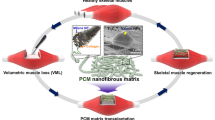Abstract
Objective and Design: The abilities of osteogenic protein-1 (OP-1) and TGF-β1 to affect cartilage damage caused by fibronectin fragments (Fn-fs) that are known to greatly enhance cartilage proteoglycan (PG) degradation were compared.¶Material: Articular cartilage was obtained from 18 month old bovines.¶Treatment: To test blocking of damage, cartilage was cultured with or without OP-1 or TGF-β in the presence of 100 nM Fn-fs. To test restoration of PG, cartilage was first cultured with Fn-fs and the cartilage then treated with factors.¶Methods: Cartilage PG content was measured in papain digests using the dimethylmethylene blue assay. PG synthesis was measured by incorporation of 35S labeled sulfate.¶Results: OP-1 blocked damage and restored PG in damaged cartilage, apparently due to enhanced PG synthesis. However, TGF-β1 alone decreased PG content.¶Conclusions: These results clearly demonstrate differences between OP-1 and TGF-β1, both members of the TGF-β superfamily and illustrate the efficacy of OP-1 in blocking Fn-f mediated damage.
Similar content being viewed by others
Author information
Authors and Affiliations
Additional information
Received 26 August 1998; returned for revision 10 October 1998; accepted by G. W. Carter 15 January 1999
Rights and permissions
About this article
Cite this article
Koepp, H., Sampath, K., Kuettner, K. et al. Osteogenic protein-1 (OP-1) blocks cartilage damage caused by fibronectin fragments and promotes repair by enhancing proteoglycan synthesis. Inflamm. res. 48, 199–204 (1999). https://doi.org/10.1007/s000110050446
Published:
Issue Date:
DOI: https://doi.org/10.1007/s000110050446




